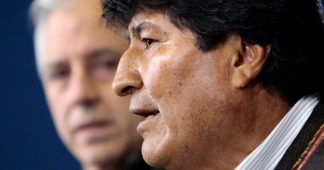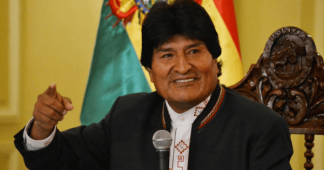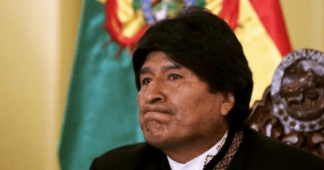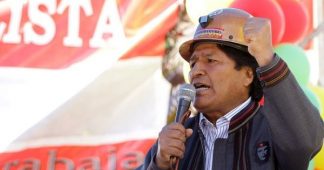13 November 2019
Bolivia, South America’s most impoverished nation, teeters on the brink of a civil war in the wake of a US-backed coup that led to the resignation Sunday of President Evo Morales, Vice President Álvaro García Linera and various ministers, state governors and government officials.
While Morales, García Linera and others have fled the country for asylum in Mexico, the Bolivian workers, peasants and indigenous majority that they purported to represent have been left behind to confront heavily armed troops and fascist gangs in the streets.
The bitter lesson that the Latin American working class can advance its interests not by means of “left” bourgeois nationalist regimes, but only through its own independent revolutionary struggle, is once again being written in blood.
Thousands of workers and youth have responded with courageous resistance to the coup, taking to the streets of La Paz and the neighboring working-class district of El Alto, where they burned down police stations and confronted security forces. Elsewhere, miners and peasants have blocked highways, and anti-coup protesters have confronted heavily armed troops firing live ammunition and tear gas grenades. In Cochabamba, the military brought in a helicopter to fire on crowds. The toll of dead and wounded has steadily risen.
The military-police violence has been accompanied by a reign of terror by the fascistic opponents of Morales, who have burned down homes of those linked to the government, kidnapped family members of officials and carried out violent assaults against those linked to Morales’s Movement toward Socialism (MAS) party, as well as targeting indigenous people, especially women, for attacks. Headquarters of social organizations have been attacked, and radio stations invaded and taken off the air.
After three weeks of protests over the disputed October 20 presidential election, the coup was consummated Sunday with a televised address by Gen. Williams Kaliman, the chief of the armed forces, surrounded by the entire military command, in which they “suggested” that “the president resign his presidential mandate and allow the pacification and reestablishment of stability for the good of Bolivia.”
Morales and García Linera took the “suggestion,” saying that they were doing so to “avoid bloodshed” and “guarantee peace.” If that was their objective, their capitulation to the military and the Bolivian right has failed miserably.
US President Donald Trump celebrated the overthrow of Morales as a “significant moment for democracy in the Western Hemisphere,” warning that Venezuela and Nicaragua are next.
But it wasn’t only Trump. Both the New York Times and the Washington Post published editorials Tuesday supporting the coup and suggesting that it was a blow for “democracy,” and that the role of the military in forcing Morales out was merely incidental.
This reflects the fundamental continuity in Washington’s imperialist policy in Latin America under Democrats and Republicans alike, from the abortive 2002 coup against Hugo Chavez in Venezuela under George W. Bush (prematurely celebrated by the Times), to the 2009 US-backed overthrow of President Manuel Zelaya in Honduras under Barack Obama, to today’s ouster of Morales under Trump.
Underlying this continuity is the drive by US imperialism to reverse the decline of its global economic hegemony by means of military force and violence, particularly in the region that it has so long regarded as its “own backyard.” This is driven both by the desire of US transnationals to lay unfettered claim on Latin America’s resources and markets—not least Bolivia’s vast energy and mineral reserves, including 70 percent of the world’s lithium—and by the strategic confrontation between US imperialism and China, whose trade with the region rose to $306 billon last year.
excerpt from an article by Bill Van Auken published in WSWS











